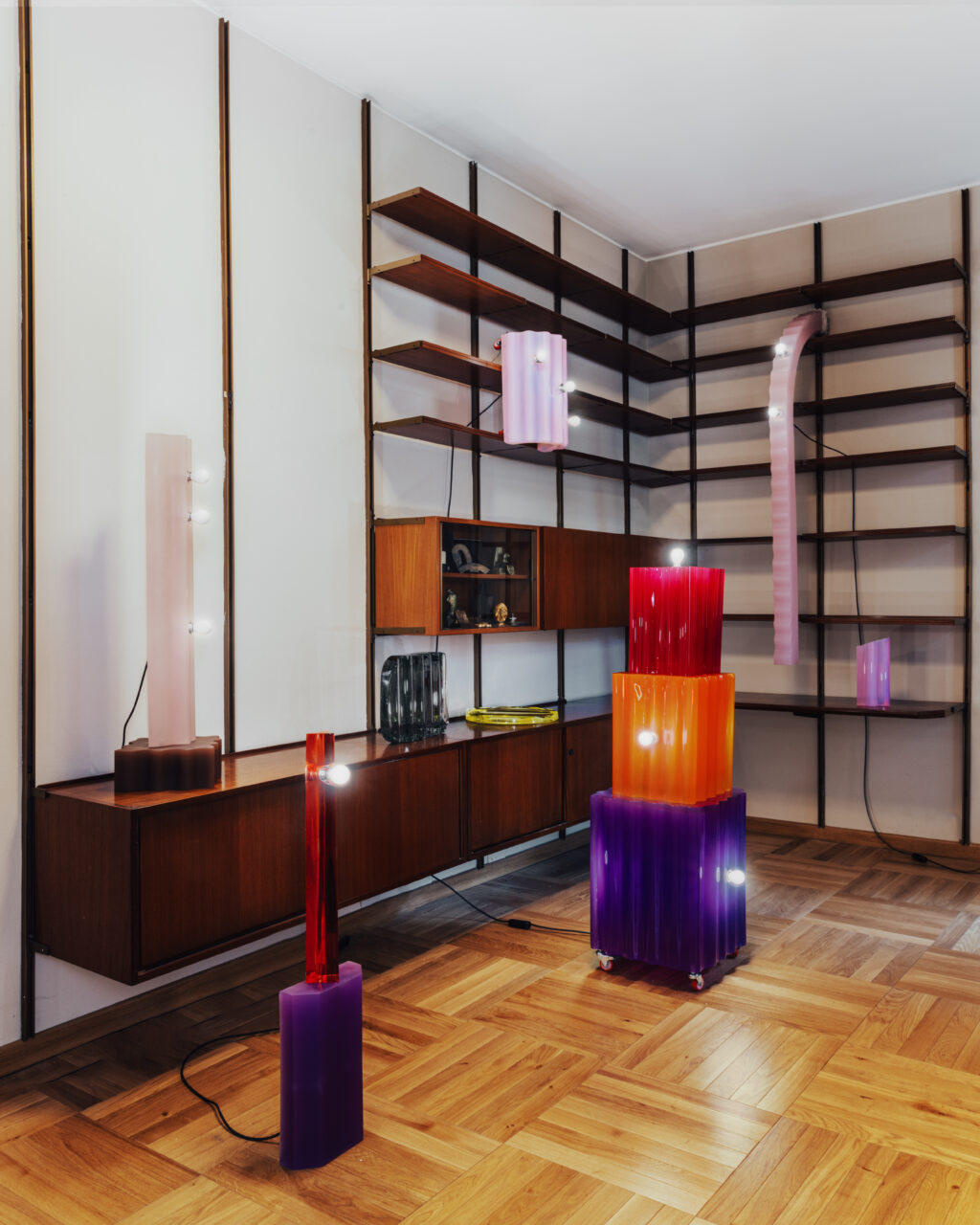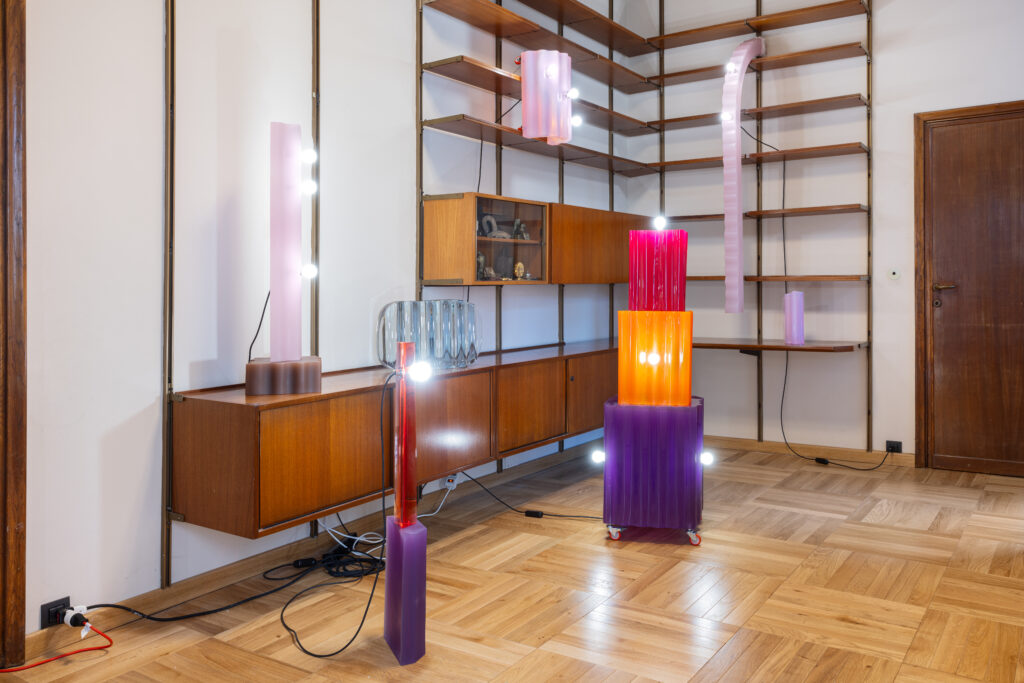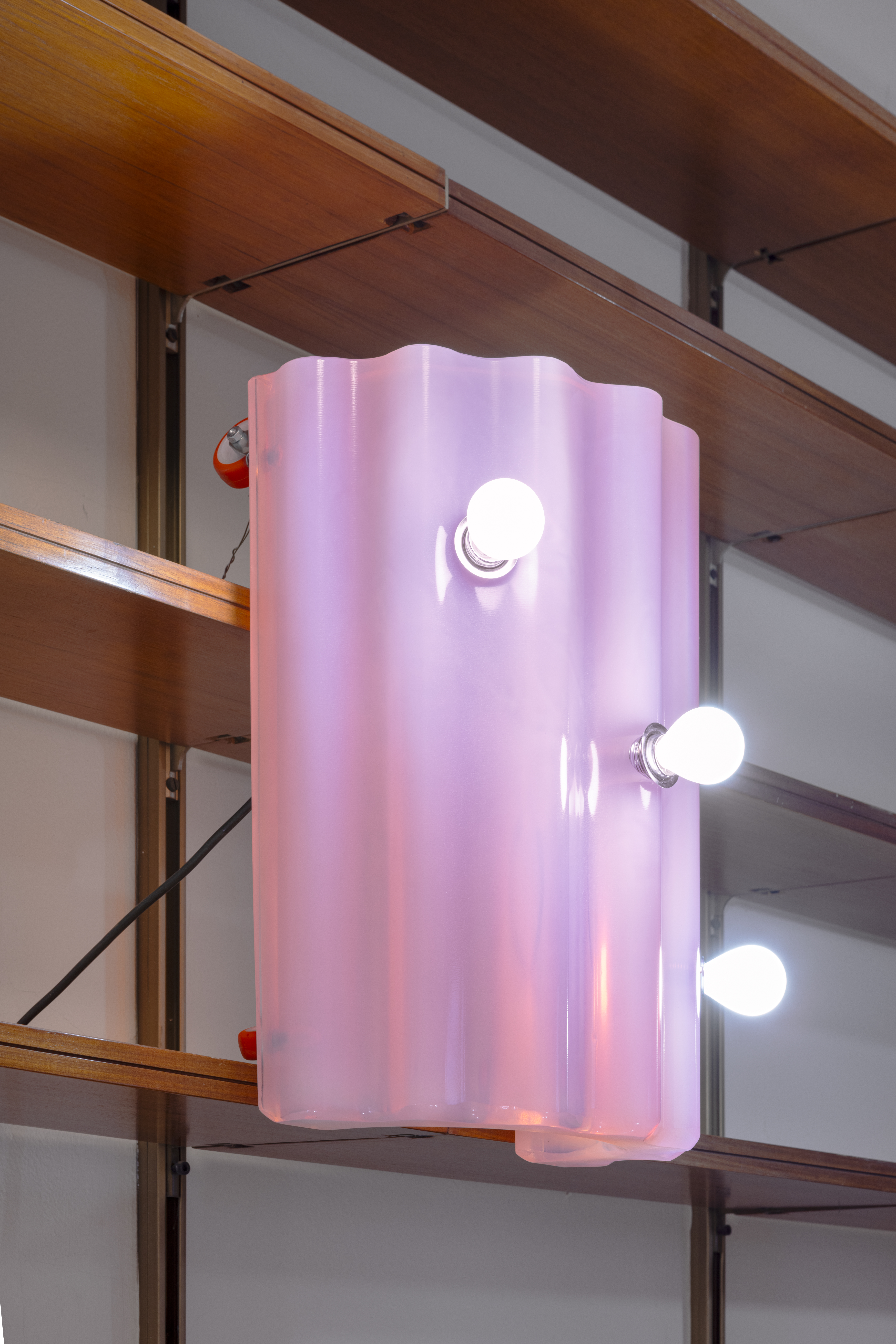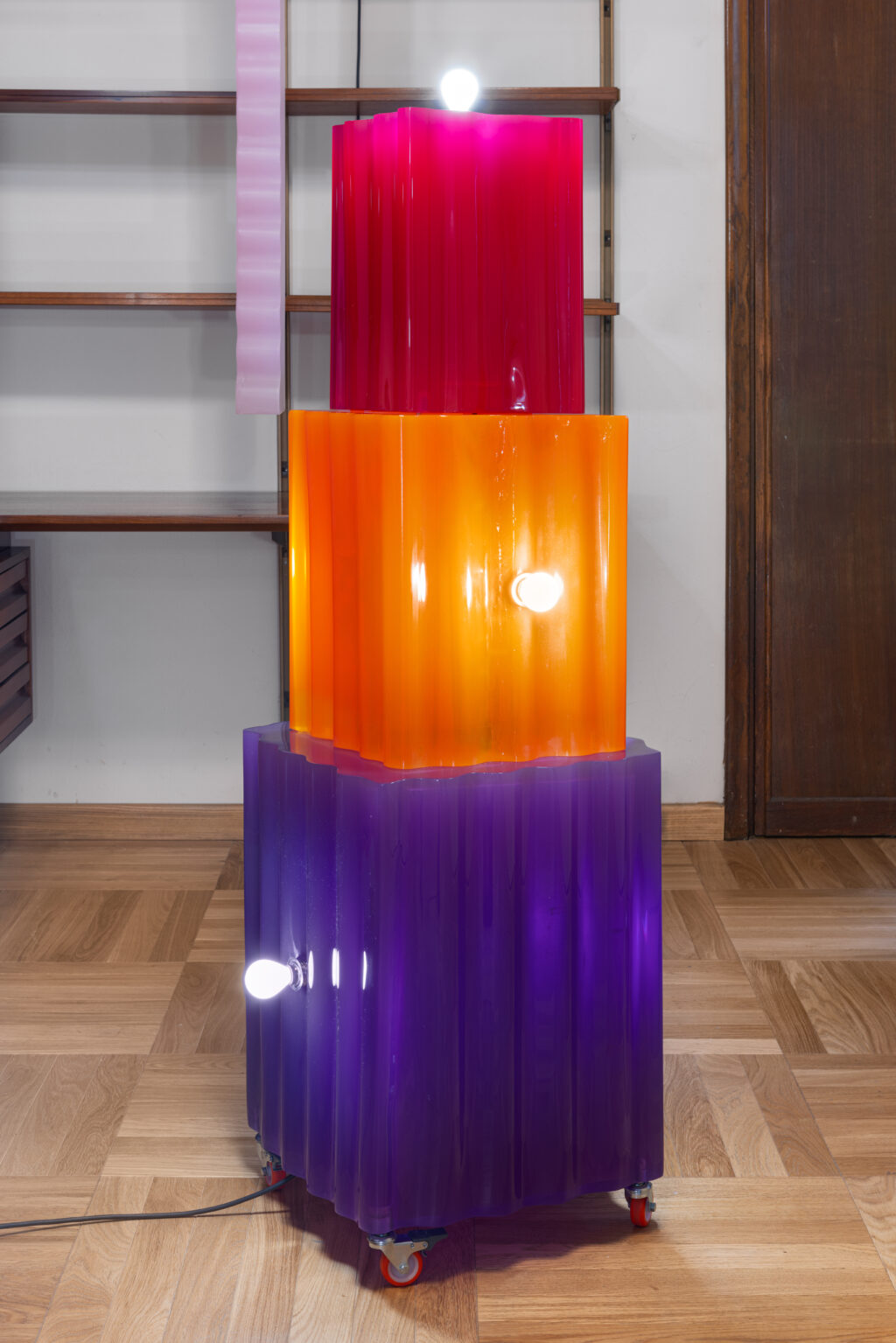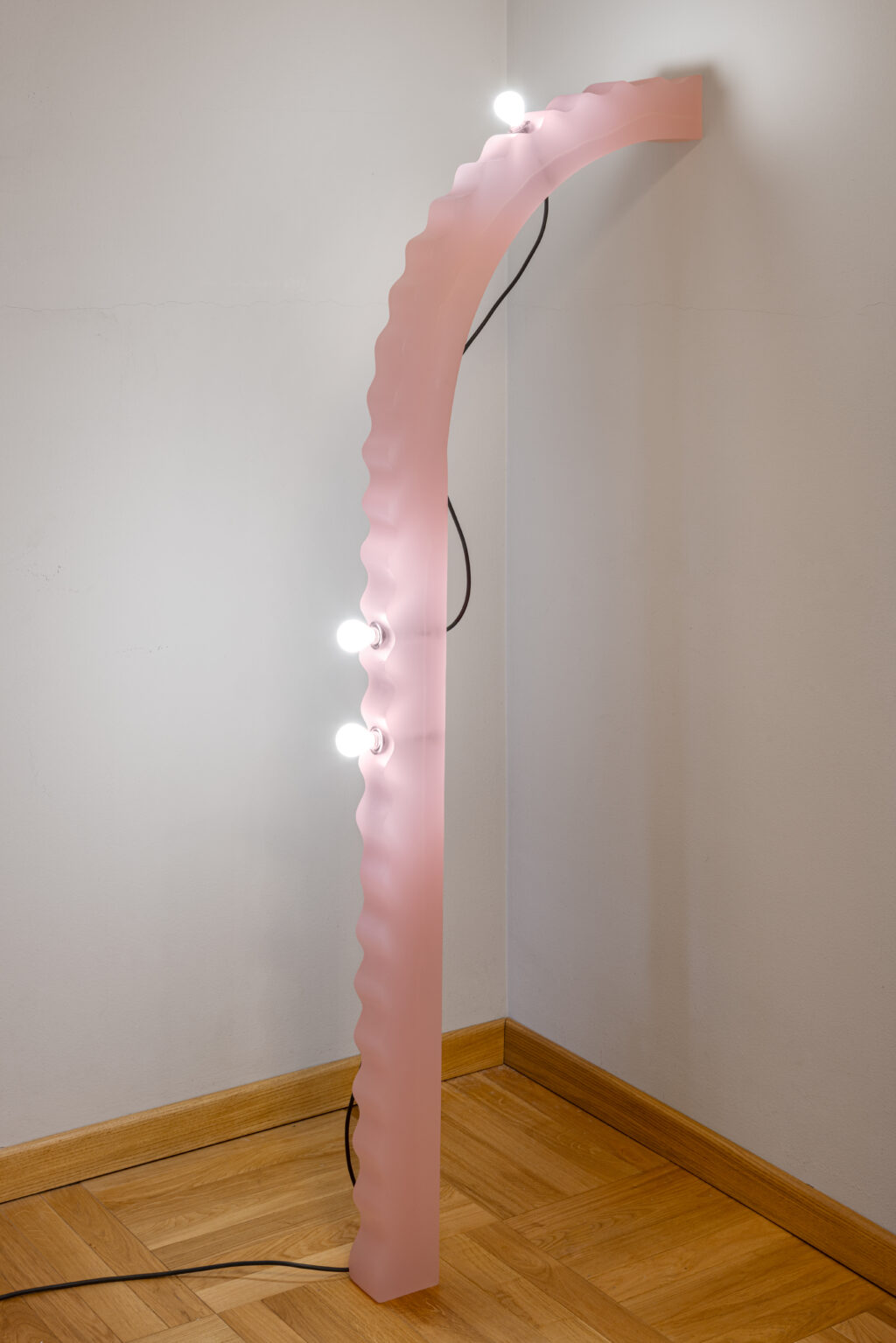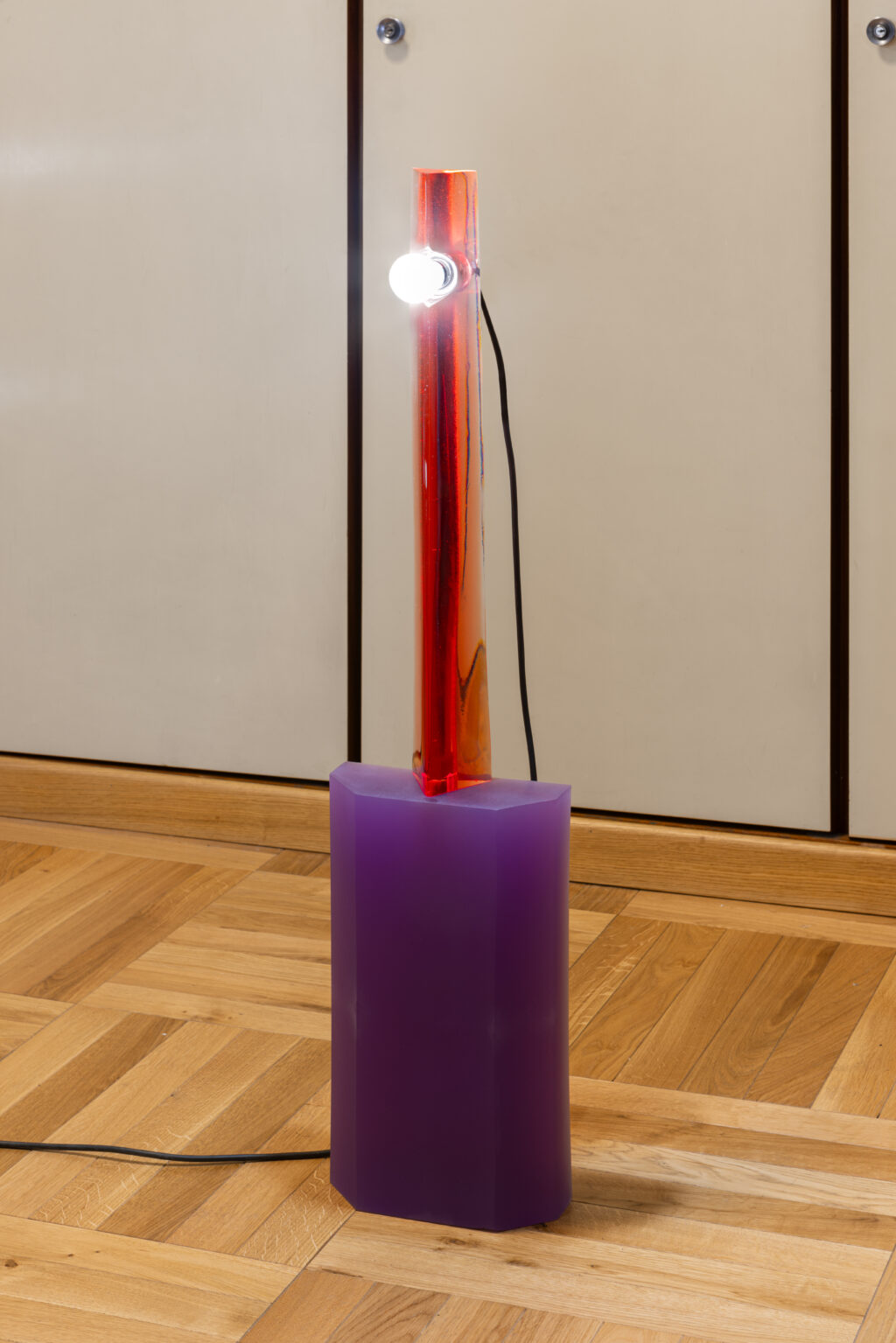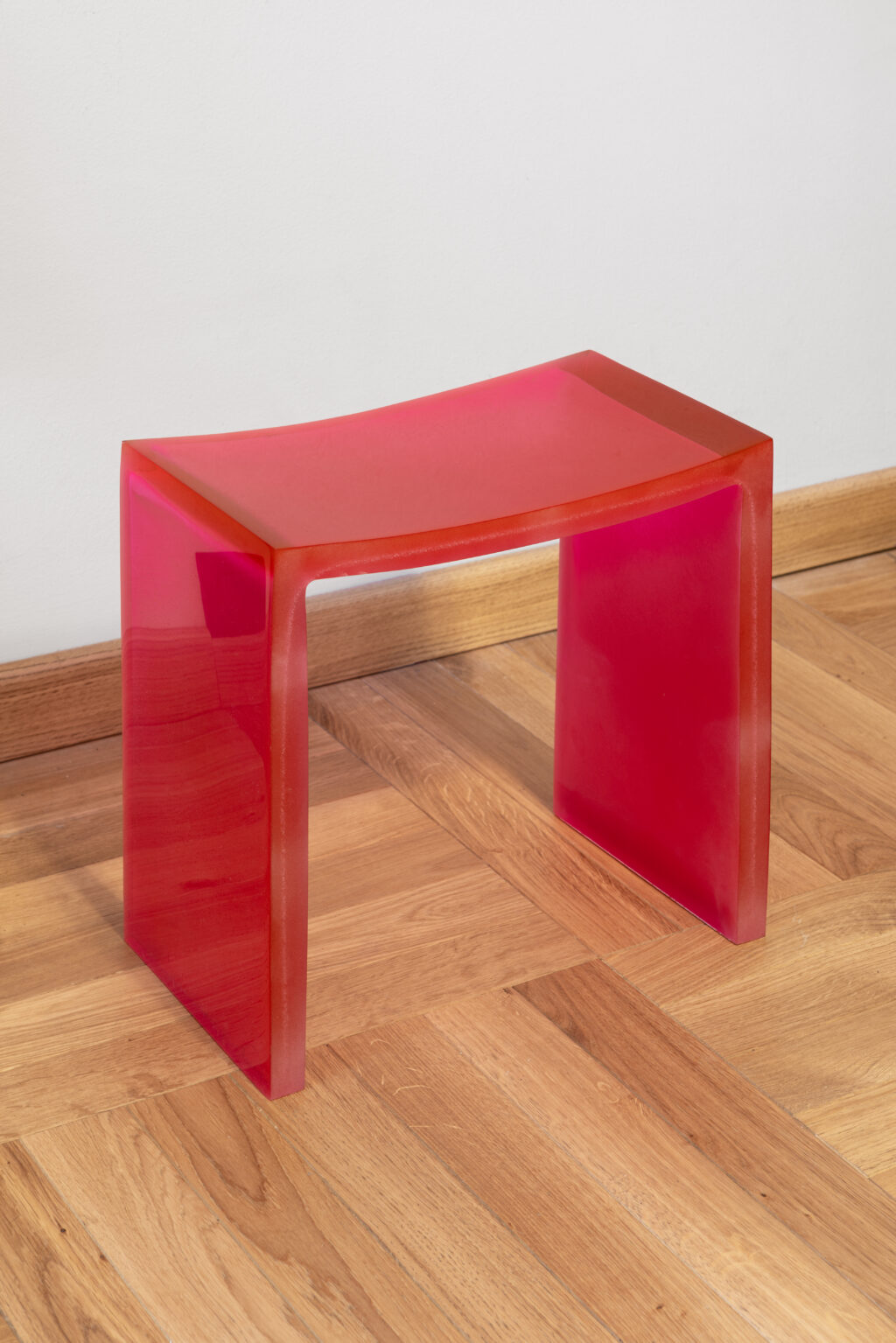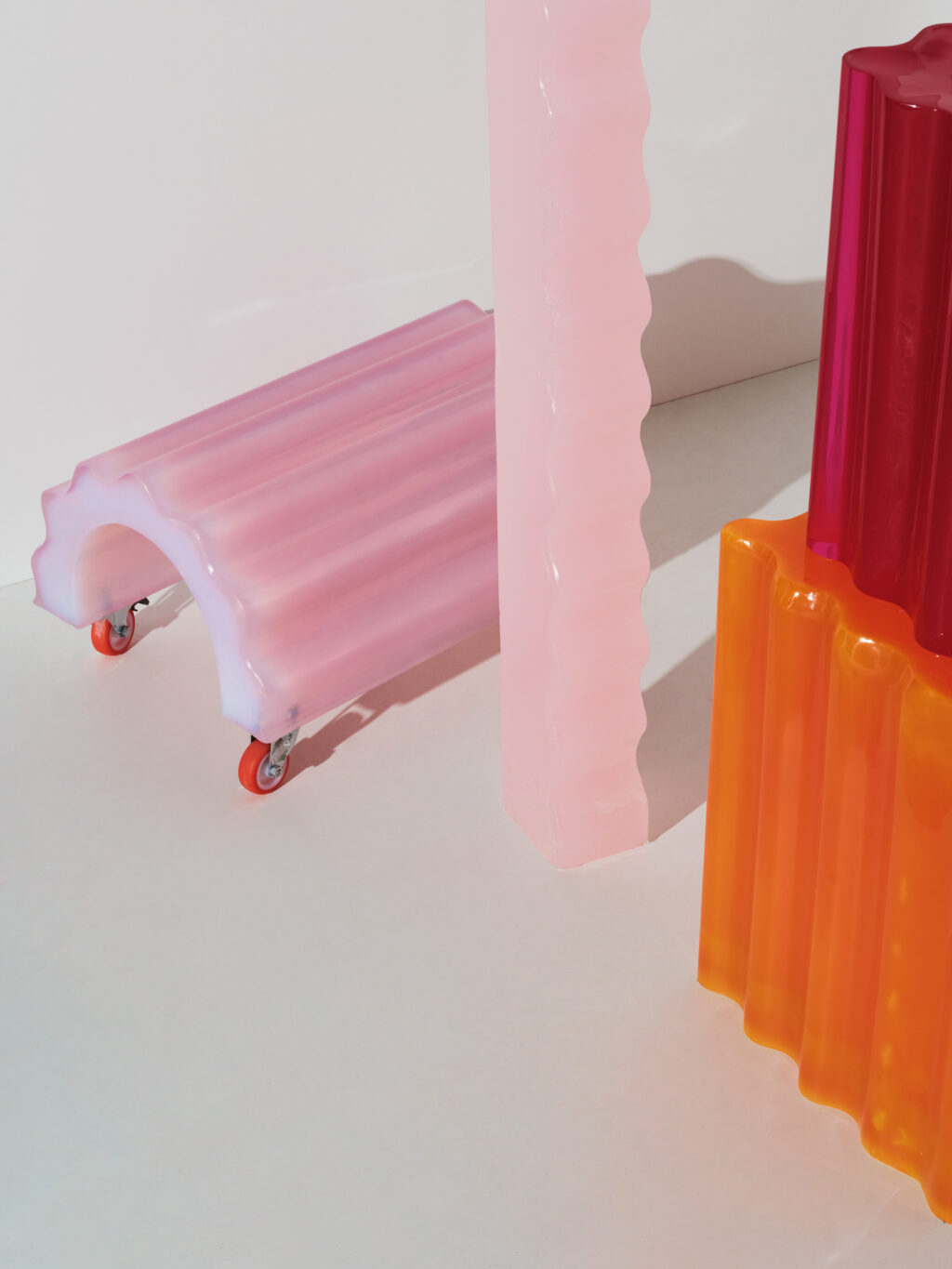The Breeder x Objects of Common Interest
Alcova
April 7, 2025–April 13, 2025Villa Borsani, Via Umberto I, 148, Italy
VOIDS ROLLERS
A project by Objects of Common Interest for The Breeder curated by Joy Herro.
At its core, VOIDS explores the balance between absence and presence, material and immaterial, gesture and permanence. Created by Objects of Common Interest, this series of resin works challenges traditional form-making by prioritizing negative space—the unseen, the overlooked, and the transient. Through a process of casting, VOIDS transforms ephemeral moments into tangible sculptures, elevating what is typically discarded into something permanent.
Each piece emerges from a choreography of gestures—bending, folding, wrapping— where the designers’ interaction with basic materials defines the final form. This process blurs the line between spontaneity and precision, embracing the mold not as a mere tool, but as a conceptual force that shapes the object’s very existence.
The first series draws inspiration from Athens’ urban landscape, specifically corrugated steel shopfront rollers. These everyday surfaces, marked by time, graffiti, and function, are reinterpreted through casting, rendering them unusable after each iteration. This transformation underscores the fleeting nature of their original state while giving rise to new sculptural forms that capture the essence of transition.
A Living Landscape: The Scenography
Set within the historic Villa Borsani at Alcova, VOIDS takes on a new dimension—bridging public and private, the architectural and the intimate. Curator Joy Herro envisions the scenography as a space where these sculptural works are not static objects but animated presences, seemingly infused with movement and autonomy. First presented at Frieze 2024 with The Breeder, the collection immediately resonated beyond mere physicality, appearing as if the works themselves desired transformation.
If these objects could speak, they might declare: “We’ve had enough of being just objects! Time to roll out of here—literally.”
These pieces transcend mere aesthetic trends. They carry the weight of time, labor, and place—totemic in their presence, ritualistic in their evolution. Athenian shop rollers, once functional thresholds between commerce and community, now undergo a metamorphosis into sculptural pieces that challenge perceptions of material permanence.
One piece might whisper to another, “Did you hear? One of us made it into a living room. We’re evolving!”
The scenography respects VOIDS’ intrinsic logic, allowing the works to inhabit the space organically. They require no rigid framework; they simply are , as if they have always belonged within Villa Borsani. Lamps, transformed from urban residues, cast an ambient glow, seamlessly blurring the line between found object and design piece. They seem to settle naturally into their surroundings, adapting, mutating, and coexisting.
Another might joke, “Shh… blend in, and they won’t notice we’re actually trying to escape.”
Reconsidering Form and Space
What makes VOIDS compelling is its reflection on transformation—not just of materials but of meaning, context, and time. These works embody an evolution, shifting from urban remnants to autonomous sculptures, from raw gestures to refined expressions. Within Villa Borsani, they prompt contemplation about the spaces we navigate daily and the objects we choose to live with.
One piece might lament, “I was just a roller, minding my own business, and now I’m an art piece! What a plot twist.”
More than an exhibition, VOIDS is an encounter—an unfolding narrative where material, space, and memory intertwine. The scenography does not dictate but allows, fostering an organic dialogue between objects and their environment, between history and experience, between absence and presence.
Ultimately, VOIDS challenges us to reconsider the essence of form, function, and belonging. It is not merely about what is created, but about what is left behind—about the moments that define our perception of space and materiality.
Or, as one particularly dramatic sculpture might say, “They tried to confine me to a mold — but I broke free!”
